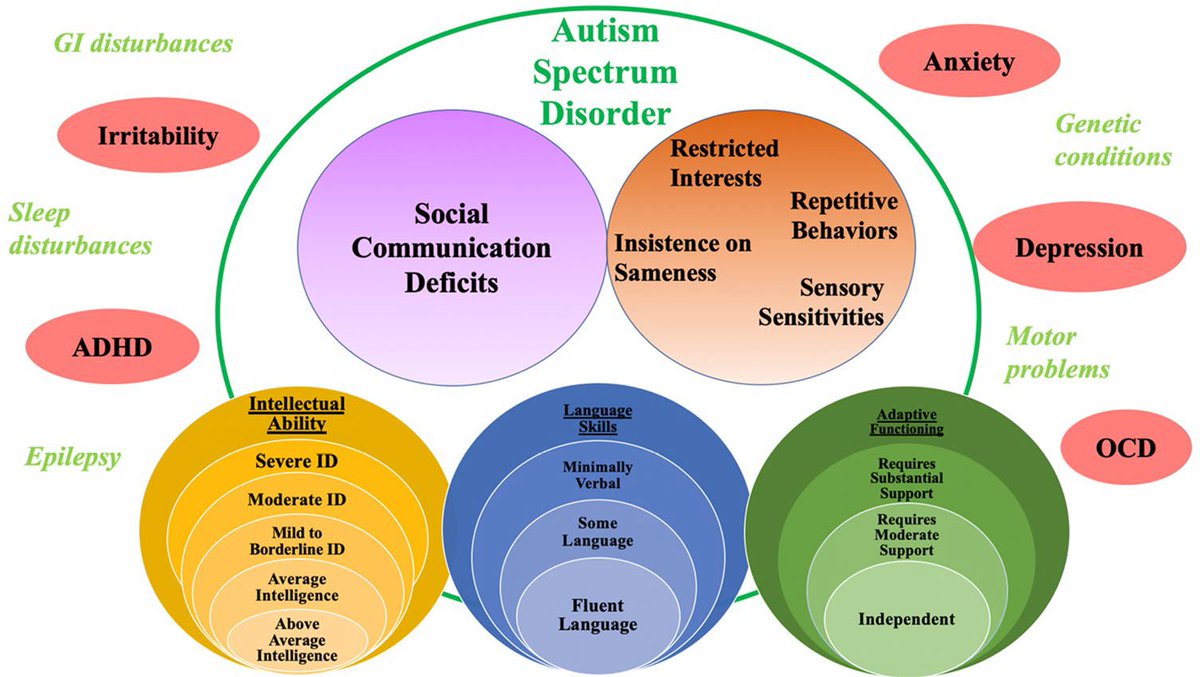
I came across this image that displays DSM-5 autism and various things like co-occurring conditions, and it's specifiers.
link.springer.com/article/10.100…
article is open access.
link.springer.com/article/10.100…
article is open access.

I like this diagram, I think it is informative.
What has caught my eye, is how I could could compare PDA to autism using the this diagram. It is not a straightforward task, as PDA features would be smeared around the edges of the autism criteria.
What has caught my eye, is how I could could compare PDA to autism using the this diagram. It is not a straightforward task, as PDA features would be smeared around the edges of the autism criteria.
The diagram is not designed to compare PDA to autism. So these issues are to be expected.
Many of you will be familiar with this diagram of mine. Comparing DSM-5 autism criteria to Aggregated PDA. 

So I have used the Rosen et al (2021) diagram as a basis for this comparison of autism DSM-5 criteria vs aggregated profile. 



I have tried to align PDA features to their equivalent position on Rosen et al image. Working from ADHD through to anxiety, then onto OCD. Yet, obviously is not full on OCD/ ADHD.
I have also tried to use research results to inform PDA features on there. So like PDA being predicted by hyperactivity.
I will give Newson's diagnostic grouping.
My previous Autism vs PDA image.
Rosen et al image.
Mine Rosen et al derivative comparison vs PDA.
You should see a consistency in conceptualisations on what is autism, & how PDA is not autism.



My previous Autism vs PDA image.
Rosen et al image.
Mine Rosen et al derivative comparison vs PDA.
You should see a consistency in conceptualisations on what is autism, & how PDA is not autism.




For the record Newson does view Autistic Disorder & Asperger's to be the autism spectrum, so it would not extend to cover PDA, under her views. Which is probably why she does not have PDA overlapping autism.
adc.bmj.com/content/archdi…

adc.bmj.com/content/archdi…


@threadreaderapp please could you unroll?
Ta in advance.
Ta in advance.
• • •
Missing some Tweet in this thread? You can try to
force a refresh



